Why Professional Server Support Is the Secret Weapon Behind Smart IT Strategy
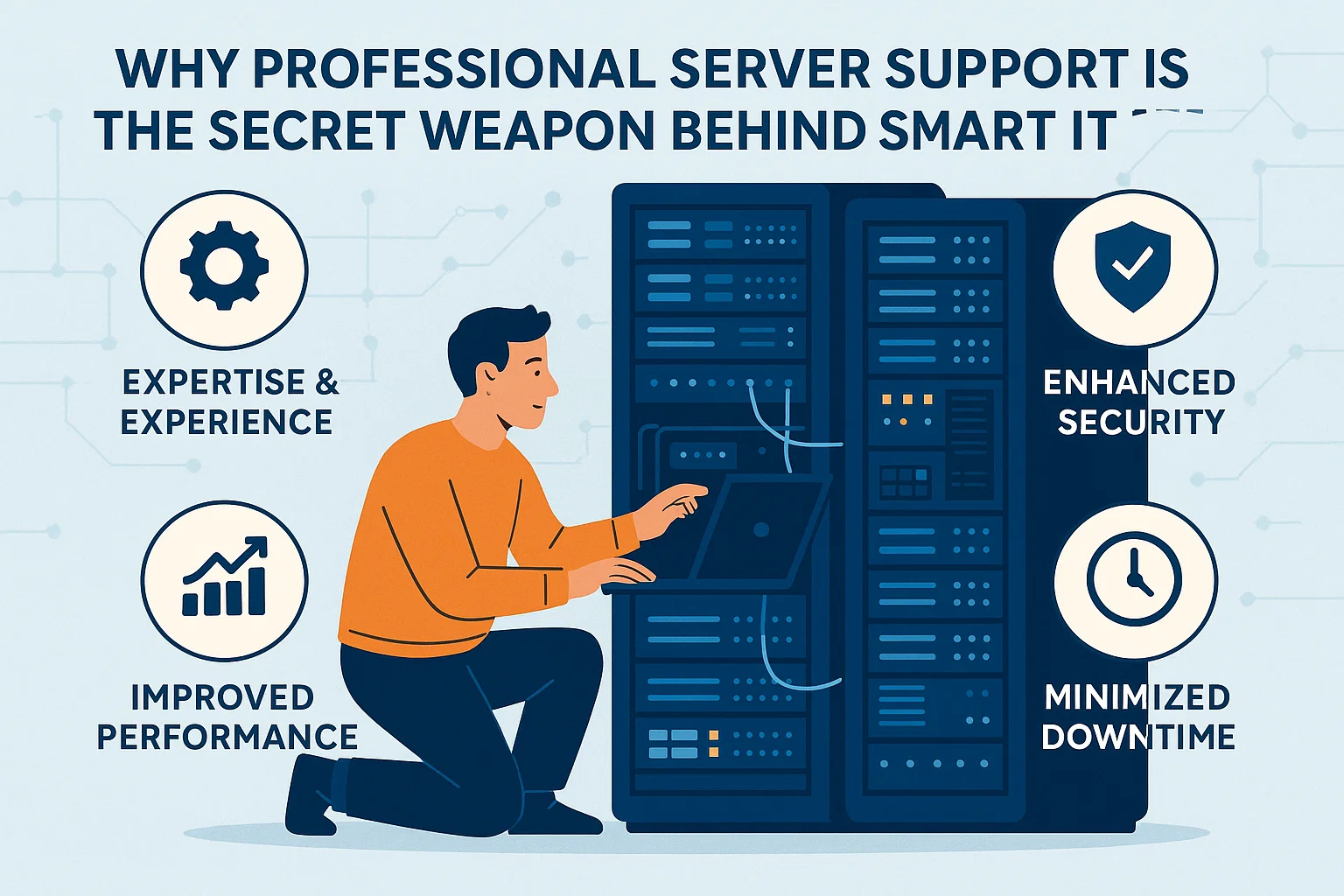
In the digital battleground where businesses compete for market dominance, there’s an unsung hero working tirelessly behind the scenes: professional server support. While executive teams debate marketing budgets and product roadmaps, a more fundamental question lurks beneath the surface—who’s keeping the infrastructure running that makes everything else possible?
The answer to that question might be the difference between a thriving enterprise and one scrambling to recover from preventable disasters.
The Hidden Cost of DIY Server Management
Most businesses don’t realize they’re hemorrhaging money until it’s too late. When your internal IT team doubles as your server administrators, firefighters, and strategic planners all at once, something has to give. Usually, it’s strategic innovation that gets sacrificed at the altar of urgent maintenance tickets.
Consider this scenario: Your lead developer spends three hours troubleshooting a server performance issue instead of building the feature that could give you a competitive edge. That’s not just three hours lost—it’s opportunity cost multiplied across every similar incident throughout the year.
Professional server support transforms this equation entirely. It’s not about replacing your team; it’s about unleashing them.
Beyond Break-Fix: What Modern Server Support Actually Means
If you think server support means waiting for something to break before calling someone, you’re operating with an outdated playbook. Modern professional server support is predictive, proactive, and deeply integrated into business strategy.
Today’s server support professionals monitor hundreds of metrics in real time, identifying performance degradation before users notice. They patch vulnerabilities before they’re exploited. They optimize configurations based on actual usage patterns rather than guesswork. This isn’t reactive maintenance—it’s continuous optimization.
The most sophisticated organizations view their server support team as strategic partners who understand how infrastructure decisions cascade into business outcomes. When you’re planning to scale operations by 40% next quarter, your server support team should already be modeling the infrastructure implications and planning the migration path.
The Security Imperative Nobody Wants to Talk About
Let’s address the uncomfortable truth: most businesses are one misconfigured server away from a catastrophic security breach. The threat landscape evolves faster than any single IT professional can track, with new vulnerabilities emerging daily.
Professional server support teams live and breathe security. They maintain certifications, track emerging threats, and implement defense-in-depth strategies that would require your in-house team to become full-time security specialists. When a critical zero-day vulnerability hits the news, they’re already patching your systems while your competitors are still reading about it.
The cost of a data breach isn’t just the immediate financial hit—it’s the erosion of customer trust, regulatory penalties, and the years spent rebuilding your reputation. Professional server support is insurance that actually prevents disasters rather than just paying out after they happen.
The Scalability Advantage That Separates Winners from Survivors
Growth is every business’s stated goal, but rapid growth breaks more companies than failure ever could. The culprit? Infrastructure that can’t scale at the speed of opportunity.
Professional server support teams architect for growth from day one. They build elastic infrastructure that expands during peak demand and contracts during quiet periods. They implement load balancing, redundancy, and failover systems that ensure your customer experience remains flawless whether you’re serving one hundred users or one hundred thousand.
This scalability thinking extends beyond just handling more traffic. It’s about supporting new markets, integrating acquisitions, and pivoting business models without rebuilding your entire infrastructure each time. When opportunity knocks, your infrastructure should be the accelerator, not the bottleneck.
Uptime as a Competitive Differentiator
In an always-on economy, downtime isn’t just inconvenient—it’s existential. Every minute your systems are unavailable, customers are finding alternatives. Many of them won’t come back.
Leading server support providers consistently maintain uptime levels in the high-nine range—such as 99.9%, 99.99%, and in some cases an impressive 99.999%. These aren’t just vanity metrics. The difference between 99% uptime and 99.99% uptime is the difference between 87 hours of downtime per year versus less than one hour.
This level of reliability comes from redundant systems, automated failover, continuous monitoring, and most importantly, expertise in predicting and preventing failures before they occur. Your internal team might get you to 99% uptime. Professionals get you to the level where downtime becomes a competitive advantage.
The Real ROI: What Smart Companies Actually Measure
The conversation around server support usually fixates on cost, but sophisticated organizations measure entirely different metrics. They’re tracking mean time to resolution, infrastructure efficiency ratios, security incident frequency, and unplanned downtime costs.
When you calculate the true ROI of professional server support, you’re measuring the revenue that flows through reliable systems, the development velocity gained when your team focuses on building rather than maintaining, and the risks avoided through proactive security measures.
One retail company calculated that every hour of downtime during peak shopping season cost them $450,000 in lost revenue. Their professional server support contract cost less than one hour of that downtime. The math becomes obvious when you frame it correctly.
Compliance and Governance: The Silent Business Enabler
As regulatory frameworks tighten globally, compliance has shifted from checkbox exercise to strategic imperative. Professional server support teams bring expertise in GDPR, HIPAA, PCI-DSS, SOC 2, and the alphabet soup of other compliance frameworks that can make or break business opportunities.
More importantly, they architect systems with compliance built in rather than bolted on. They maintain audit trails, implement proper access controls, and ensure data residency requirements are met automatically. When auditors come calling, the documentation and evidence already exist.
This compliance expertise doesn’t just prevent penalties—it opens doors. Many enterprise contracts now require proof of robust infrastructure management and security practices. Professional server support provides the credibility that wins those deals.
The Technology Evolution Challenge
Technology doesn’t stand still, and neither should your infrastructure. The shift to cloud computing, containerization, microservices, edge computing, and AI-driven operations represents both enormous opportunity and potential disruption.
Professional server support teams navigate these transitions constantly. They’ve migrated hundreds of workloads to the cloud, containerized legacy applications, and implemented orchestration platforms. When you’re ready to adopt new technology, they bring battle-tested experience rather than theoretical knowledge.
This expertise prevents the costly false starts that plague companies attempting transformation without experienced guidance. They know which technologies actually deliver on their promises and which are solutions searching for problems.
Building Versus Buying: The Strategic Choice
Every business faces the build-versus-buy decision for critical capabilities. Could you theoretically build an internal server support function that rivals professional teams? Absolutely. Should you?
Building requires hiring specialists in infrastructure, security, compliance, and operations. It requires redundancy so coverage exists during vacations and turnover. It requires ongoing training to maintain cutting-edge expertise. And most challenging, it requires enough scale to justify these specialists working full-time on your infrastructure alone.
For most businesses, professional server support represents access to enterprise-grade expertise at a fraction of the cost of building it internally. It’s the same strategic calculus that leads companies to outsource payroll processing or leverage cloud platforms rather than building data centers.
The Partnership Model That Actually Works
The most successful server support relationships don’t follow a vendor-customer dynamic—they operate as true partnerships. The support team becomes an extension of your organization, deeply understanding your business model, seasonal patterns, and strategic objectives.
This partnership manifests in regular strategic reviews, proactive improvement recommendations, and collaborative planning for future initiatives. Your server support team should attend planning meetings, contribute to architecture decisions, and challenge assumptions that might lead to infrastructure problems down the road.
When this partnership works correctly, your internal IT team operates at a higher strategic level while execution and optimization happen seamlessly in the background. It’s the difference between conducting an orchestra and playing every instrument yourself.
Future-Proofing Your Infrastructure Investment
Technology investments made today need to support business objectives five years from now—objectives that don’t fully exist yet. Professional server support teams excel at building flexible infrastructure that adapts to changing requirements without requiring complete replacement.
They implement modular architectures, maintain upgradeable systems, and avoid vendor lock-in that limits future options. When your business strategy pivots, your infrastructure should enable that pivot rather than constrain it.
This future-proofing extends to emerging technologies like quantum computing, advanced AI infrastructure, and technologies we haven’t imagined yet. Professional teams stay ahead of these curves, ensuring your infrastructure is ready when opportunity arrives.
The Bottom Line: Infrastructure as Strategic Advantage
The question isn’t whether professional server support delivers value—it’s whether you can afford to compete without it. In markets where milliseconds of latency or minutes of downtime can swing major deals, infrastructure excellence isn’t optional.
Smart IT strategy recognizes that infrastructure isn’t just about keeping the lights on. It’s about enabling speed, ensuring security, supporting scale, and creating the foundation for innovation. Professional server support is the secret weapon because it transforms infrastructure from cost center to competitive advantage.
The businesses winning in their markets aren’t necessarily the ones with the best products or the most innovative ideas. They’re the ones whose infrastructure enables them to execute flawlessly, scale rapidly, and innovate continuously. Professional server support is how they do it.
Frequently Asked Questions
Q: How much does professional server support typically cost?
Professional server support costs vary dramatically based on infrastructure complexity, service level requirements, and support scope. Basic managed services might start around $2,000-$5,000 monthly for small to mid-sized deployments, while enterprise-grade support for complex infrastructure can range from $10,000 to $50,000+ monthly. However, the more relevant question is ROI—companies typically find that the cost of downtime prevented, security incidents avoided, and developer productivity gained far exceeds the support investment. Request detailed proposals that outline exactly what’s included and measure the cost against your current internal spending on infrastructure management.
Q: What’s the difference between managed services and professional server support?
The terms often overlap, but generally, managed services refers to comprehensive outsourcing of IT functions including endpoints, applications, and infrastructure, while professional server support specifically focuses on server infrastructure, availability, security, and performance. Server support might be one component within a broader managed services agreement, or it can be a standalone service for organizations that handle other IT functions internally. The key distinction is scope—server support specialists dive deep into infrastructure optimization, while managed services providers offer broader but sometimes less specialized coverage across all IT domains.
Q: Can professional server support work with our existing internal IT team?
Definitely—and in fact, this remains the most widely used deployment approach across the industry. Professional server support works best as an extension of your internal team rather than a replacement. Your internal staff focuses on strategic initiatives, application development, and business-specific customizations while the support team handles infrastructure optimization, monitoring, security patching, and incident response. With this model, your in-house team’s understanding of the business combines seamlessly with the advanced infrastructure skills of seasoned support experts. Clear communication channels, defined escalation paths, and regular coordination meetings ensure seamless integration between internal and external teams.
Q: How quickly can professional server support respond to critical issues?
Response times depend on your service level agreement, but typical professional support tiers offer 15-minute response times for critical issues, one-hour response for high-priority problems, and four-hour response for standard issues. The most important factor isn’t just initial response time but resolution time—how quickly the problem actually gets fixed. Top-tier support teams often detect and resolve issues before they impact users through proactive monitoring. When evaluating providers, ask about their mean time to resolution for different issue categories and request references from current clients about actual response experiences during critical incidents.
Q: What happens to our data security when working with external server support?
Reputable professional server support providers implement rigorous security protocols that often exceed what most internal teams can achieve. This includes background-checked personnel, strict access controls, multi-factor authentication, encrypted communication channels, detailed audit logging, and compliance with relevant industry standards like SOC 2, ISO 27001, and HIPAA where applicable. Support teams typically use privileged access management systems that create temporary, monitored access only when needed for specific tasks. Before engaging any provider, review their security certifications, request details about their security practices, and ensure contractual protections exist around data handling, confidentiality, and breach notification.
Q: How do we transition from internal server management to professional support?
A structured transition typically takes 30-90 days depending on infrastructure complexity. The process begins with comprehensive discovery and documentation of your current environment, including inventory, configurations, dependencies, and known issues. The support team then creates a transition plan with clearly defined milestones, identifies quick wins for early improvement, and establishes communication protocols. Most providers use a phased approach: starting with monitoring and observation, gradually assuming responsibility for specific systems or functions, and eventually taking full operational responsibility while your team maintains strategic oversight. During this period, knowledge transfer sessions ensure your team understands new processes and maintains appropriate visibility into infrastructure operations.
Q: What metrics should we use to evaluate server support performance?
Focus on outcome-based metrics rather than activity metrics. Key performance indicators should include: uptime percentage, mean time to detection for issues, mean time to resolution, security patch compliance rates, infrastructure cost efficiency, planned versus unplanned downtime ratio, and successful change implementation rate. Also track business impact metrics like application performance improvements, user satisfaction scores, and developer productivity gains. Establish baseline measurements before implementing support, then track quarterly trends. The best providers will propose custom metrics aligned with your specific business objectives and provide transparent dashboards showing real-time performance against agreed targets.
Q: Can professional server support help us migrate to cloud infrastructure?
Cloud migration is one of the core specialties of most professional server support teams. They bring extensive experience planning, executing, and optimizing cloud migrations across AWS, Azure, Google Cloud, and hybrid environments. Support teams can assess your current infrastructure, identify suitable migration candidates, develop detailed migration plans, execute the technical transition with minimal disruption, and optimize cloud costs after migration. Their experience with dozens or hundreds of previous migrations means they’ve already encountered and solved the challenges you’re likely to face. This dramatically reduces migration risk and timeline compared to attempting cloud transition without specialized expertise.
Q: What size company benefits most from professional server support?
Professional server support delivers value across a surprisingly wide range of company sizes, but the calculus changes at different scales. Small businesses with 10-50 employees often find immediate value because they lack dedicated IT staff and need enterprise-grade infrastructure reliability. Mid-sized companies with 50-500 employees typically have small IT teams stretched thin, making specialized support highly valuable for freeing internal resources. Large enterprises with 500+ employees use professional support to supplement internal teams, handle specialized workloads, or manage specific infrastructure components. The common thread isn’t company size but infrastructure criticality—if your business depends on reliable, secure, performant infrastructure, professional support delivers measurable value regardless of organizational scale.


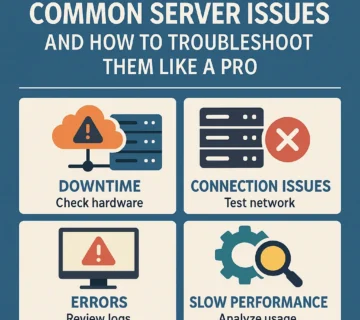
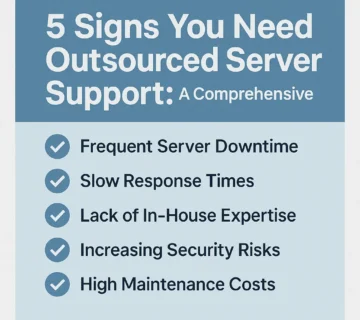
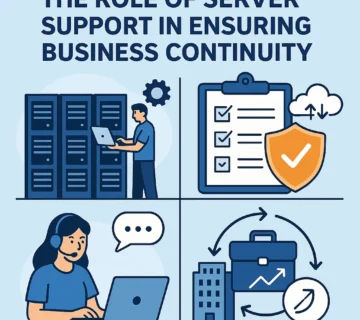
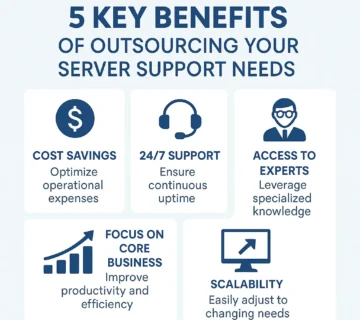

No comment